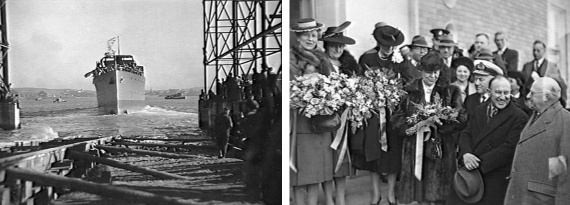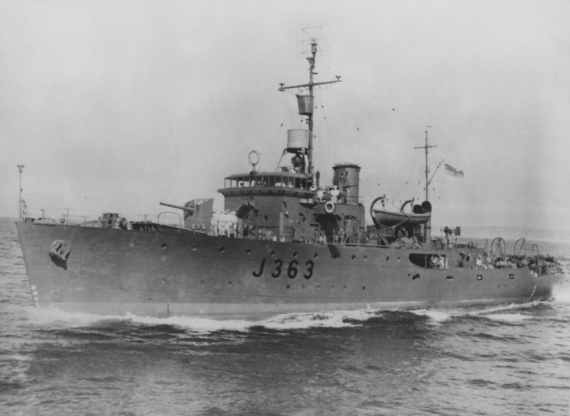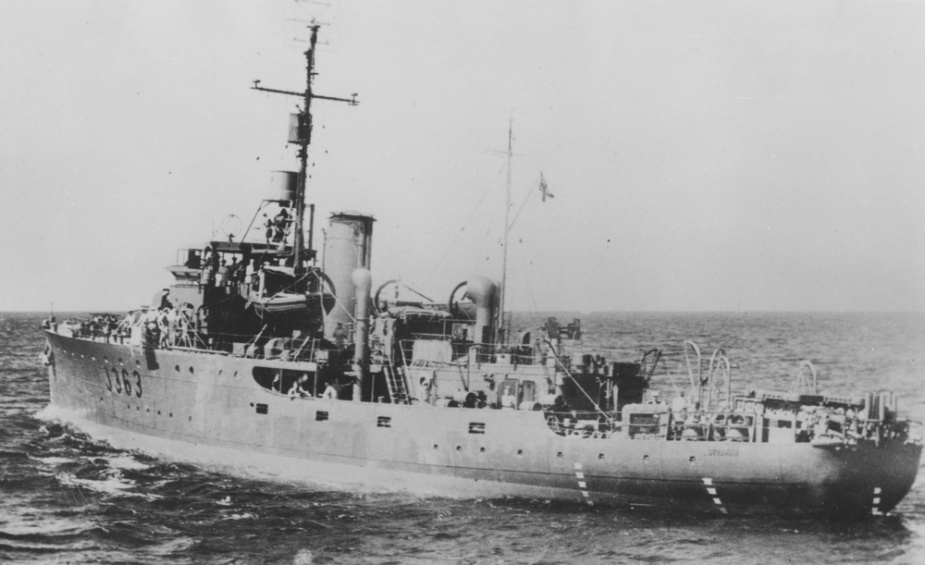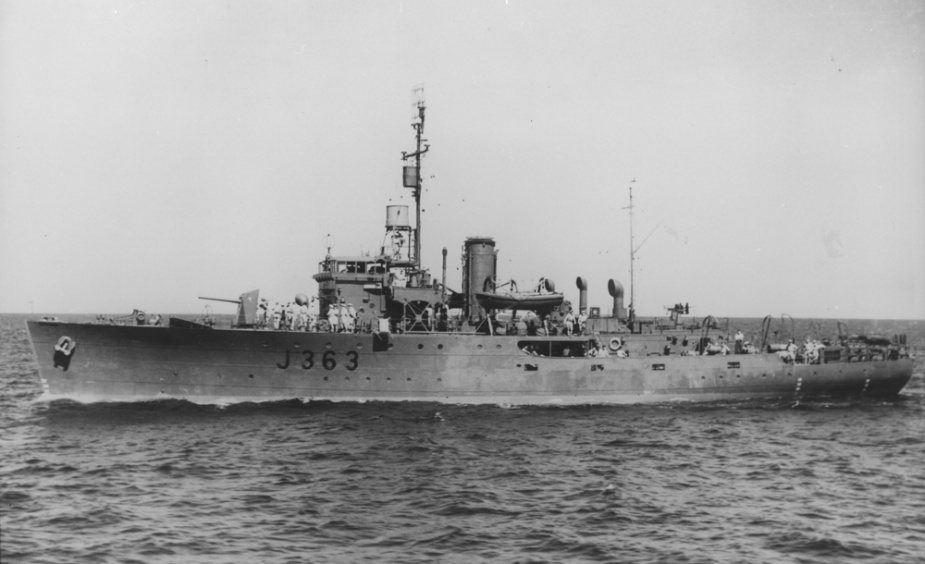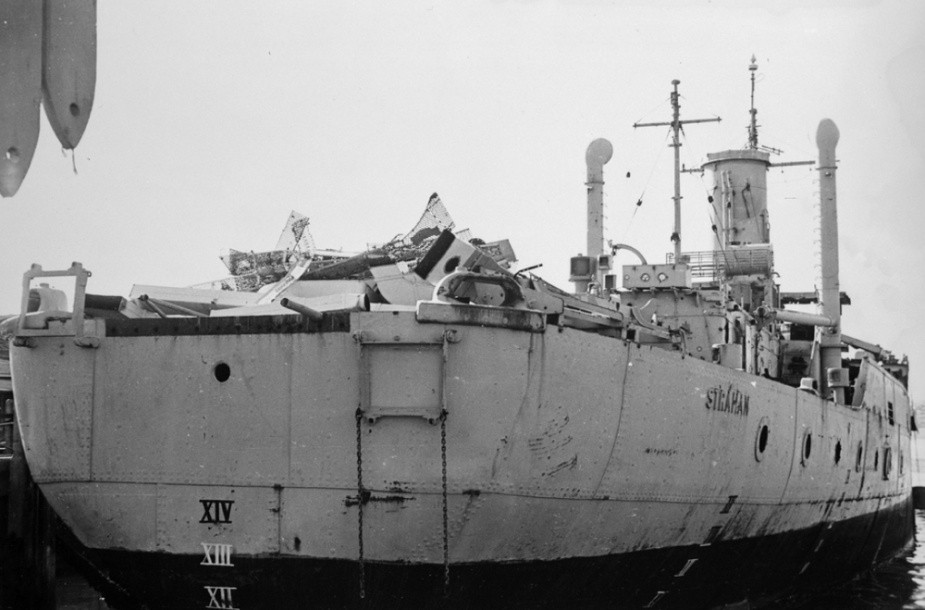HMAS Strahan
| Class |
Bathurst Class |
|---|---|
| Type |
Australian Minesweeper |
| Pennant |
J363 |
| Builder |
New South Wales State Dockyard, Newcastle |
| Laid Down |
9 October 1942 |
| Launched |
12 July 1943 |
| Launched by |
Mrs Cahill, wife of the New South Wales Minister for Public Works and Local Government |
| Commissioned |
14 March 1944 |
| Decommissioned |
25 January 1946 |
| Dimensions & Displacement | |
| Displacement | 815 tons |
| Length | 186 feet 2 inches |
| Beam | 31 feet |
| Draught | 8 feet 6 inches |
| Performance | |
| Speed | 15.5 knots |
| Propulsion | |
| Machinery | Triple expansion, 2 shafts |
| Horsepower | 2,000 |
| Armament | |
| Guns |
|
| Other Armament |
|
| Awards | |
| Battle Honours | |

HMAS Strahan was one of sixty Australian Minesweepers (commonly known as corvettes) built during World War II in Australian shipyards as part of the Commonwealth Government's wartime shipbuilding programme. Twenty were built on Admiralty order but manned and commissioned by the Royal Australian Navy. Thirty six (including Strahan) were built for the Royal Australian Navy and four for the Royal Indian Navy.
Strahan commissioned at Newcastle on 14 March 1944 under the command of Lieutenant Commander Leonard D Williams RANR.
Following a period of trials, Strahan proceeded in May 1944 to the New Guinea area where she was employed on escort and anti-submarine patrol duties.
In October 1944, while in harbour at Morotai, enemy planes bombed the harbour and adjacent targets. Strahan engaged and drove off with main armament and automatic weapons one fighter bomber which attacked her.
Strahan returned to Sydney in April 1945 and then proceeded to Adelaide in May for a refit. On completion she returned to the New Guinea area and resumed escort and patrol duties in the Morotai and Biak areas. In June 1945 Strahan went into action against Japanese land forces for the first time when she bombarded gun emplacements on Kairiru Island.
She then performed escort duties to Tarakan in Borneo and back to Morotai. On the way from Tarakan in August 1945 she sank a Japanese barge and picked up three survivors of a crew of ten.
Following the cessation of hostilities, Strahan proceeded to Hong Kong where she was engaged in minesweeping and anti piracy patrols as a unit of the 21st Minesweeping Flotilla.
While on patrol on 26 September she struck a mine and had to be towed into Hong Kong Harbour. After repairs had been effected, she returned to Australia in November and paid an official visit to her namesake town in Tasmania on 14 November 1945.
Strahan paid off into Reserve at Sydney on 25 January 1946, bringing her seagoing career to a close. During her service she had steamed almost 60,000 miles. On 6 January 1961, without being again commissioned, she was sold to Kinoshita (Australia) Pty Ltd.
Note: This video is hosted on YouTube. Department of Defence users will not be able to view this video on the Defence Protected Network.
This cine film has been placed online as part of the Sea Power Centre - Australia’s ongoing archival digitisation program.
Further Reading
- The Corvettes: Forgotten Ships of the Royal Australian Navy, by Iris Nesdale - published by the author, October, 1982.
- Corvettes - Little Ships for Big Men, by Frank B Walker - published by Kingfisher Press, NSW, 1996.
- The Australian Centenary History of Defence Volume III, The Royal Australian Navy, edited by David Stevens, Oxford University Press, South Melbourne, Victoria, Australia, 2001.


